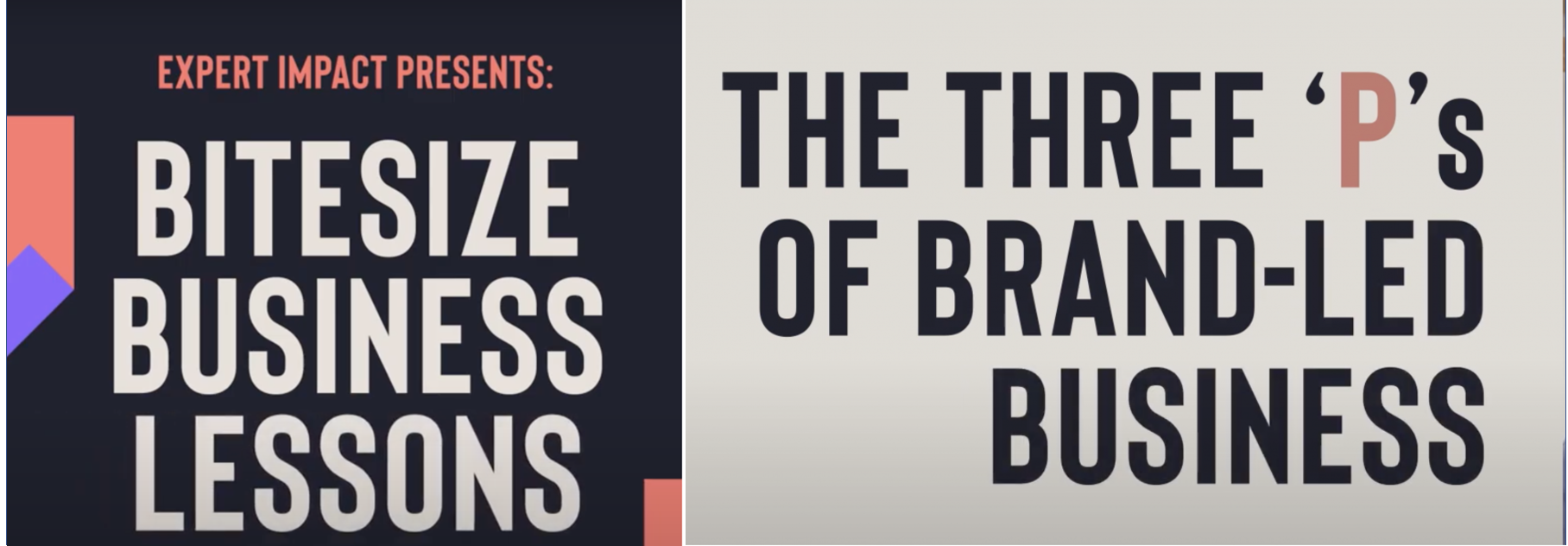‘How to Create a Strong Brand for Your Social Enterprise‘ is a short film I recently recorded with Expert Impact (1), as part of their Business Bitesize series. This wonderful organisation accelerates the growth of social entrepreneurs by matching them with world-leading experts (working pro-bono) for ‘lighting bolt’ mentoring sessions. Through my 15 mentoring sessions, I’ve worked with some amazing social enterprises, including chocolate company Harry Specter’s (2) who I talk about in the film.
In this post I look at ‘3 Ps’ of brand-led business covered in the film: purpose, product and properties. There are of course more than 3 Ps that matter. But the Expert Impact sessions last only one hour, so over the years I’ve learnt to focus to make the most expert impact.
Athough the focus here is on social enterprises, the principles are relevant for any business.
1. BRAND PURPOSE
The first ‘P’ of brand-led business we work on in the Expert Impact session is brand purpose. Social entrepreneurs often come in with a problem related to the effectiveness of their marketing mix, such as a website or product range. But, as with all brand strategy projects, the start-point is to go back to the fundamentals of brand purpose: the positive and distinctive role a brand plays in improving everyday life.
This work involves probing into what really drives and motivates the social entrepreneurs I meet. What triggered them to set up their business in the first place? What is the difference they want to make? In the case of Harry Specter’s, the purpose is to craft delicious chocolates that create employment for young people with autism.
Clarifying the brand purpose has multiple benefits:
- Inspiration: stimulating the creation of new idea
- Guidance: keeping you on track to your desired destination
- Consistency: drives consistency over the mix and over time
- Cut-through: helps your brand stand out in an increasingly over-crowded world
2. PRODUCT
The second ‘P’ brand-led business of we work on is then product. I suggest that social enterprises lead with a brilliant product or service that really delivers on the core benefits that drive purchase. Our new brandgym research suggests that 62% of consumers choose which brand to buy mainly on these core benefits, with a further 33% deciding based on both these benefits and impact on sustainability of society and the planet. Only 5% chose a brand based mainly on sustainability.
So, people might try you once thanks to your social impact. But to keep coming back and to recommend you, the product or service really needs to deliver.
In the case of Harry Specter’s the chocolates have beaten many bigger brands in the Good Taste awards, winning 22 prizes including three highly coveted gold awards. They are beautifully designed, hand-finished and are of course delicious. They deliver on the core benefit of tasting good whilst making your feel good, thanks to the positive impact every box sold makes to create employment for young people with autism.
3. BRAND PROPERTIES
The 3rd P of brand-led business is brand properties, such as logos, colours, slogans and sonic branding. These are important to help you stand out from the crowd by creating ‘distinctive memory structure’ that gets your brand recalled at moments of truth when people buy. Social enterprises have limited marketing budgets. So distinctive properties are especially important to help them get the biggest bang for their branding buck.
In the case of Harry Specter’s, the brand has used the same slogan for several years: Enjoy our chocolates. Love the cause. As mentioned earlier, this leads with the core benefit of delicious taste and supports with the social mission.
Founders can also play a key role in helping a social enterprise stand out. And this has been the case with Harry Specter’s co-founder, Chocolatier and Managing Director Mona Shah. Her story of how the company was inspired by her autistic son Ash and a passion for chocolate, has enabled the brand to get excellent media coverage. This included and article in the Financial Times (3) and product reviews in The Guardian and other leading publications. This online presence helps the brand occupy the top nine organic Google search results for ‘chocolates with a social cause’.
In conclusion, 3 Ps are a good start to create a brand-led business: clarify your purpose to inspire creation of brilliant products, brought to life with distinctive marketing that harnesses the power of brand properties.
For other posts on brand-led business, see the following:
Apple: a true brand-led business
Brand and deliver: beyond ‘image wrapper’ branding
SOURCES:
1. https://www.expertimpact.com
2. Harry Spectres
3. Financial Times article
